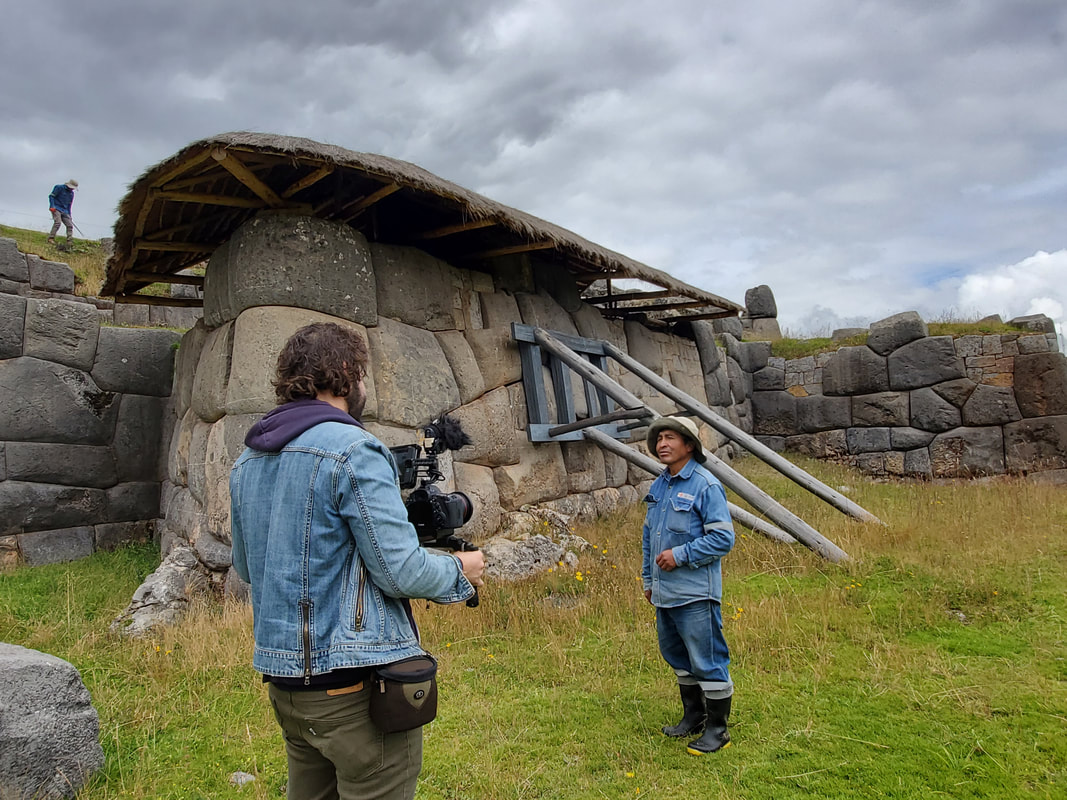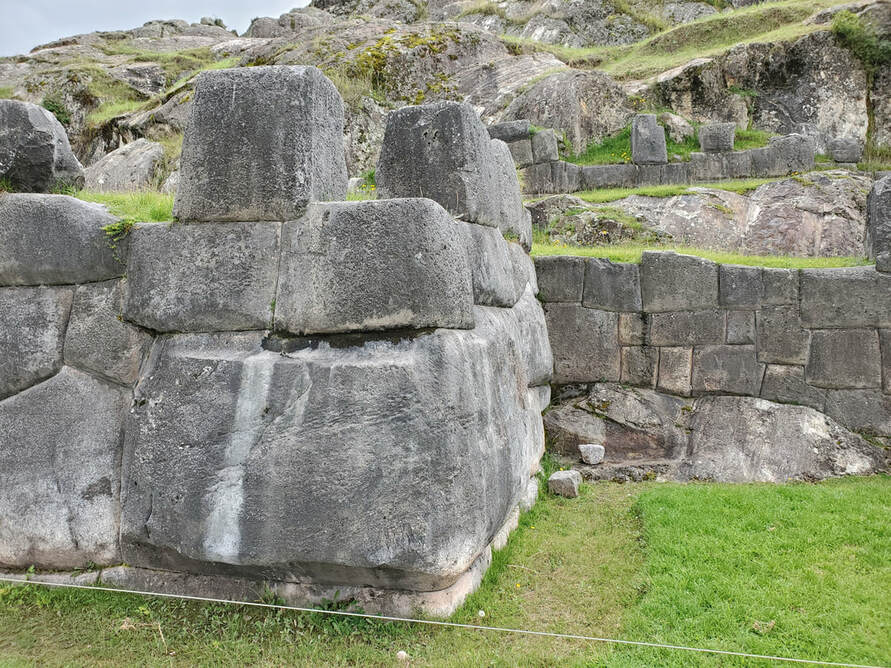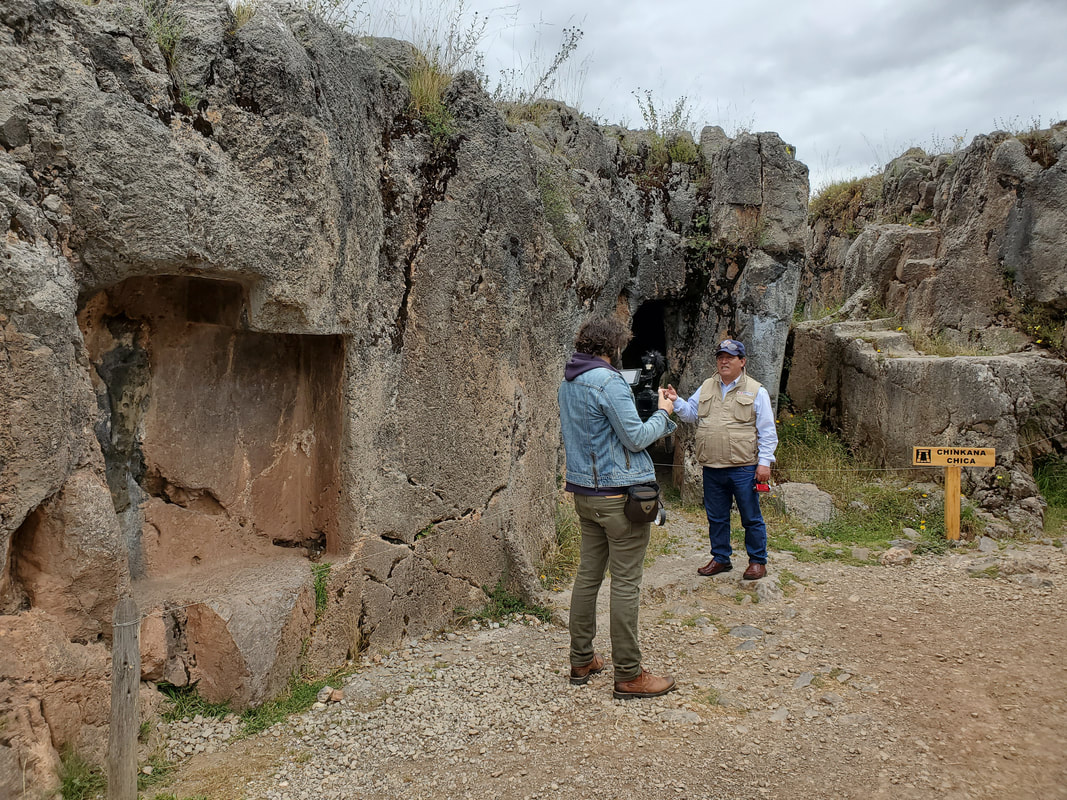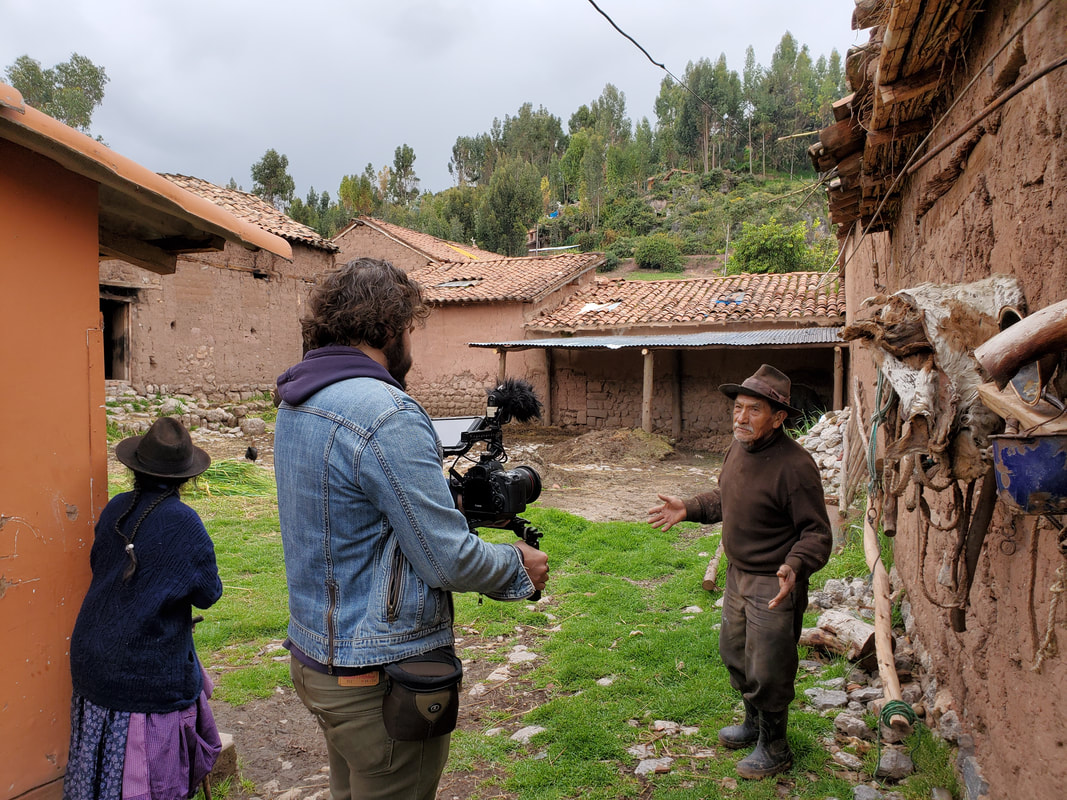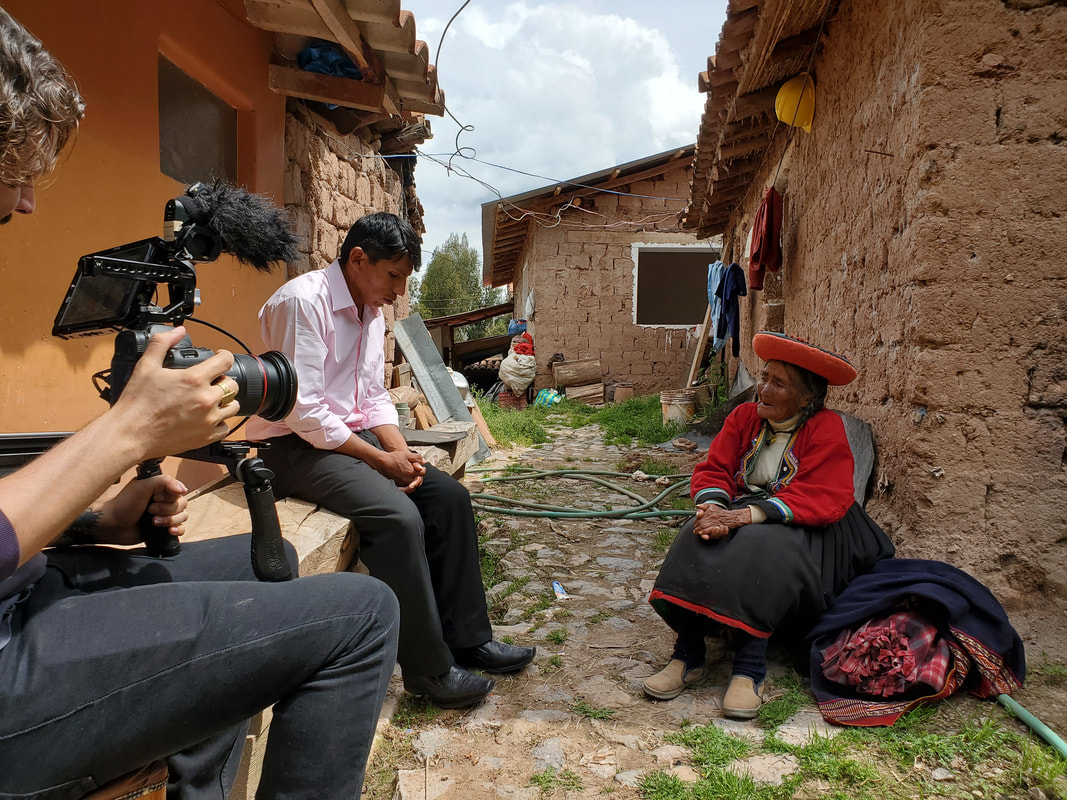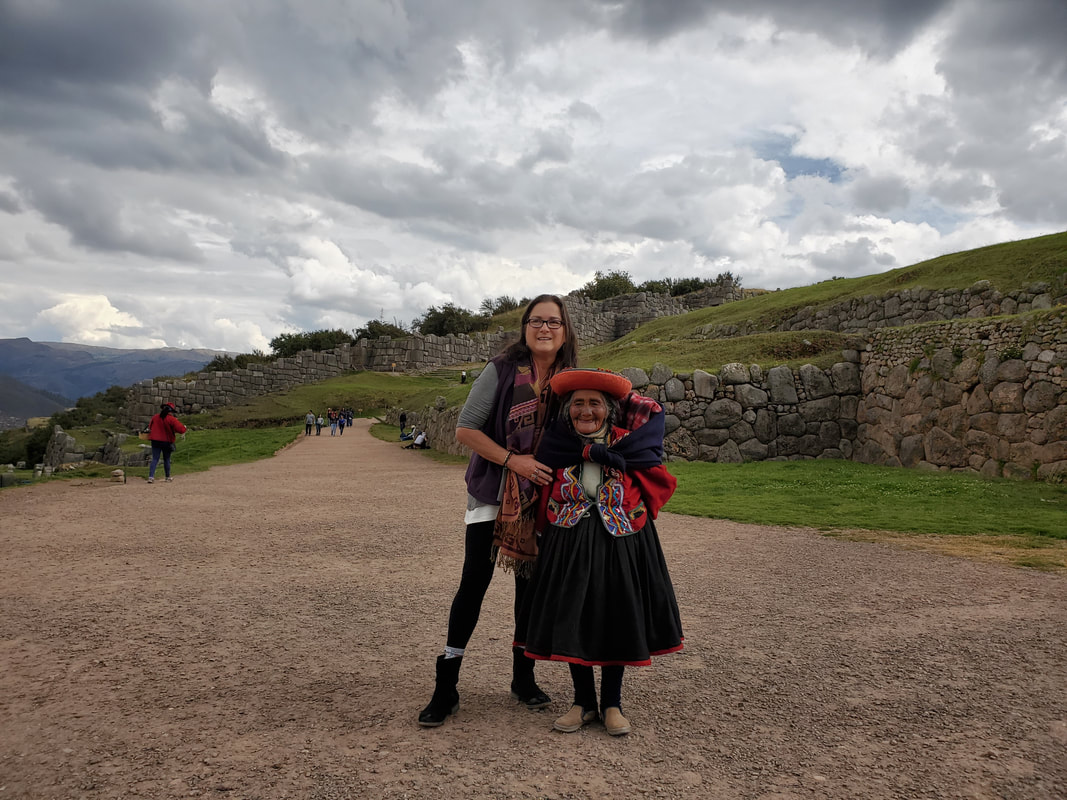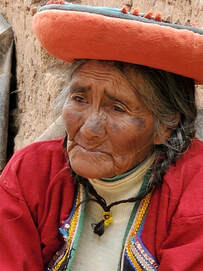 Paula Quespi, a 95 year old elder in the community of Fortaleza. Paula Quespi, a 95 year old elder in the community of Fortaleza. Spring 2019 April/May Trip to Saqsaywaman, Peru Our second trip of 2019 is at the mid-point and I'm just now getting around to writing my first blog. Why? We've been slammed doing interviews and filming both with the Ministry of Culture heritage professionals who manage the archaeological park at Saqsaywaman in Peru. And, we've also been filming community people and elders about their lives on an active archaeological site. Up to this year, we have focused on documenting the conflict between the Ministry and the communities, which at this point is well documented. So, this year we move on to telling the stories of the amazing people, most of them indigenous Quecha, and filming their stories for posterity. We are focused on both oral history with community elders and the most recent archaeological research to bring the complexity of this site to the world's attention. 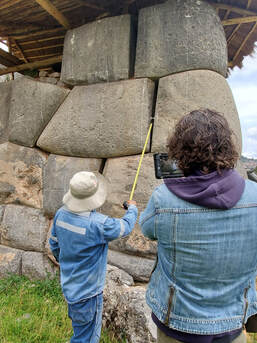 Welcomed As Fellow Site Professionals & Documenting Preservation Work At Saqsaywaman During our first few days on the site this time we were greeted with open arms by the park officials. Unlike last time when it took us 4 weeks to secure our "convenio" (the permission we need to work on the site) and we had to scramble to establish trust with the park officials again, this time we were greeted as team members. It was so gratifying and humbling to be welcomed on the site as fellow heritage professionals! And, out we went onto the field to do interviews and film the park official's preservation efforts and the most recent archaeological research findings. We happened to be here just as the annual "cleaning of the stones" was underway. We had the opportunity to tour the main walls of the main Saqsaywaman complex with restoration specialist Luis Gonzalo Camino Mamani (pictured here). His work to ensure the megalithic stones in the wall stay put through the ravages of time, weather and tourist activity is critical to ensuring this site is around for our grandchildren...and their children. This day, they were clearing weeds, which, if not removed, have the potential to destabilize the walls' foundations. 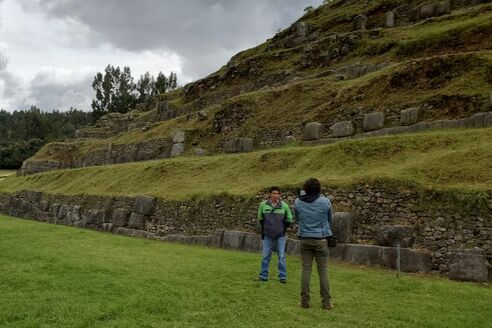 Samuel Kjura Arenas being interviewed by Dalton Gaudin in front of the Suchuna (volcanic rock outcrop opposite the main Saqsaywaman zig zag wall) about the latest biological research being done at the park Samuel Kjura Arenas being interviewed by Dalton Gaudin in front of the Suchuna (volcanic rock outcrop opposite the main Saqsaywaman zig zag wall) about the latest biological research being done at the park Latest Archaeological Research & The Need For More Field Work We had two interviews with park officials during our first week about the latest archaeological findings and theories at Saqsaywaman. Interview #1) Samuel Kjura Arenas, the head park biologist, took us to the Suchuna (a volcanic stone outcrop opposite of the main walls of Saqsaywaman) to talk to us about the biological diversity of the park and how the local communities are being encouraged to grow indigenous crops. Samuel also touched on the excavation work that still has to be done to determine if the walls continue under the current dirt level. He encouraged us to talk with the park director about this work. 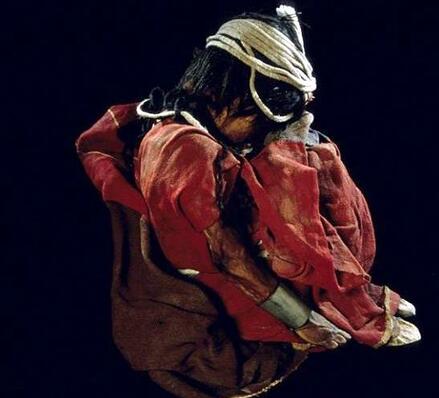 We are still waiting to film the actual female Inca warrior mummies that were discovered at Saqsaywaman, but they most likely looked something like this one. Wrapped in traditional textiles and bundled in a fetal position. We are still waiting to film the actual female Inca warrior mummies that were discovered at Saqsaywaman, but they most likely looked something like this one. Wrapped in traditional textiles and bundled in a fetal position. Interview #2) Francisco Solis Diaz / Saqsaywaman Park Director We were so very honored to be able to conduct quite an extensive interview with the park director about his current research into the discovery of 13 Incan female warrior mummies. They were found in a park of the park that is pretty remote to the normal tourist track. He is in the process of finishing a comprehensive research paper about the discovery and we hope to produce a film for him to accompany his release of his findings in September of 2019. He took us on a tour of the sacred caves on the site that were special places of ceremony for the Inca. There is speculation that the mummies were wrapped in the traditional "textile bundle" and placed during special occasions in the traditional trapazoid and square/rectangle niches that are common in and around the cave complex here at Saqsaywaman. 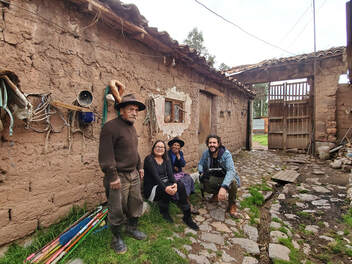 Photo of Francisco Guillen and his wife after the interview with Maren Elwood and Dalton Gaudin. Photo of Francisco Guillen and his wife after the interview with Maren Elwood and Dalton Gaudin. Oral History Rocks! After our initial interviews with the park officials, we decided to focus on recording oral history from community elders. Time is always a factor in making sure we document for posterity the lives, myths and history of local people. In the community of Fortaleza, the one closest to the main park complex, our informant Fernando Sallo managed to get us two interviews with people who've lived on the site since the 50's. These interviews were an ethnographer's dream...to be able to record what life was like for these people in their native tongue Quecha...with the translation help of Fernando. Interview with Francisco Guillen / Age 85 / Resident of Fortaleza Since 1950's Francisco lives in the original hacienda where Fernando's family grew up. He currently grows fava beans and raises cattle and chickens. He was a bit resistant at first to do an interview with us, because he thought we were from the Ministry, but after talking with Fernando for a while, he realized the value of getting his history documented for future generations. His life here has been hard and he currently lives with his wife in this modest home. He related to us his family "legends" about the building of Saqsaywaman's megalithic walls. The story goes that giants constructed the walls of Saqsaywaman with the help of inter-dimensional beings. He couldn't possibly fathom the idea that the Inca had built Saqsaywaman or moved such giant stones. This legend is common here among the elders. Francisco, the park director, assures us, however, that the Inca built these walls - possibly through conquest and the expropriation of other local tribes' masonry knowledge. 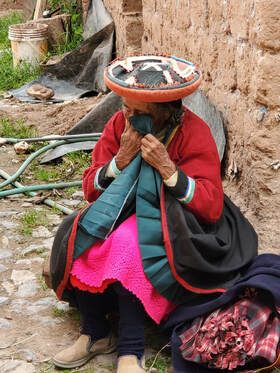 Paula Quispe wipes tears with her petticoat as she tells us of her loss of family members over her 95 years. Paula Quispe wipes tears with her petticoat as she tells us of her loss of family members over her 95 years. Interview with Paula Quespi / Age 95 / Resident of Fortaleza Since ~1950 We were so fortunate and honored to be able to spend some time with the eldest member of Fortaleza - Paula Quespi. She is 95 years old and spent over an hour with us talking about her personal history on the site, all the way back to the 1950's, when she moved to this land to join her husband. She has had 5 children and recalled with much sorrow how she had buried her husband and 3 children. It was so touching to hear stories about her life and family. It was an honor to capture her story on video. She is a valued member of Fernando Sallo's family - their grandmother or "Abuelita". Paula walks down to Saqsaywaman every day to take photos with the tourists. This is how she contributes to her family and community. She recanted the various epochs on Fortaleza during her lifetime - from the hacienda days where she and her family were basically feudal serfs for local landowners, to the agrarian reform of the 1970's, up to the current tourist era. The impact of the 21st century on these campesino communities is evident. Change is rapid and local customs are being lost to time. We asked Paula about this - her only lament was that she couldn't spend more time roaming the hills were her animals. 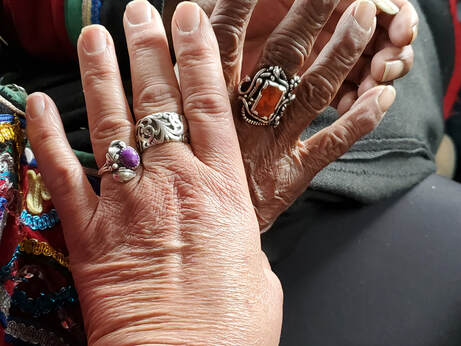 My hand on top of Paula's hand...as she tried on each of my rings. She selected the small ring on the extreme left with the leaves in silver and the purple turquoise stone. I was honored to give it to her. My hand on top of Paula's hand...as she tried on each of my rings. She selected the small ring on the extreme left with the leaves in silver and the purple turquoise stone. I was honored to give it to her. Pagos - Payment To Pachamama & To Our Informants It's always a little tricky figuring out how to compensate our informants. We are not allowed to pay the Ministry of Culture professionals and they are more than happy to work with us just for the sake of spreading the word about Saqsaywaman and their work as heritage professionals. But spending time with the community members is another matter. Interview First - Donate After Our approach is to secure interviews first and then make a donation to the community and/or person after. In this way, we don't feel like the only reason people talk with us is for the financial gain. And, we find that once people understand the benefit of getting their life experience on film for posterity, they are happy to do the interview even before they realize we are going to pay them for their time. All that said, there are times when informants want something else from us. And, our interview with Paula Quespi was one of those instances. As we were taking her back down to Saqsaywaman, she sat in the back of the car with me and started admiring the various silver rings I had on. Her eyes lit up with desire and I was happy to give her one of my pieces. These "trades" have happened before, with people either wanting something as simple as a piece of clothing or maybe even a scarf. Most of the times, they seem to covet pieces that come from the United States.... the park officials keep asking Dalton for his camera! Paula selected a small ring I had just purchased in Carmel - with a leaf pattern and a rare purple turquoise stone. She was delighted to have a piece of jewelry to remind her of our time together - and that it was from California, too! Her granddaughter joked that she was going to wait until her Abuelita was asleep - in order to slip it off her finger and keep it for herself. Next time I'm down here, I'm going to bring more jewelry from California to give to these amazing people. I usually buy jewelry here in Cusco to sell to my friends in the US... Next time, the trade will be cross cultural.
1 Comment
Leave a Reply. |
Author
Maren Elwood is a visual anthropologist and founder of On-Site Expeditions...a field school that will provide scholarships to aspiring heritage professionals. The first field school session will be in January 2020. Archives
September 2023
|
